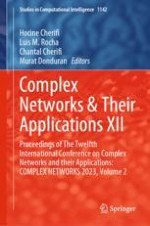2024 | OriginalPaper | Buchkapitel
Detecting Strong Cliques in Co-authorship Networks
verfasst von : Lukas Papik, Eliska Ochodkova, Milos Kudelka
Erschienen in: Complex Networks & Their Applications XII
Verlag: Springer Nature Switzerland
Aktivieren Sie unsere intelligente Suche, um passende Fachinhalte oder Patente zu finden.
Wählen Sie Textabschnitte aus um mit Künstlicher Intelligenz passenden Patente zu finden. powered by
Markieren Sie Textabschnitte, um KI-gestützt weitere passende Inhalte zu finden. powered by
